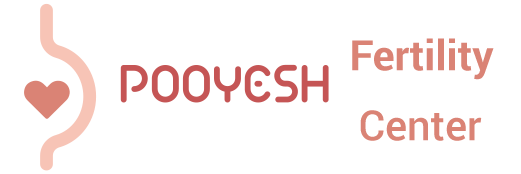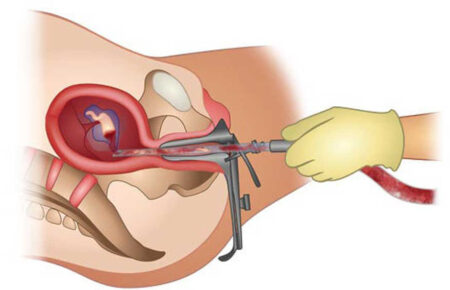Diagnostic and Therapeutic D&C
Pooyesh Fertility Clinic
Diagnostic and Therapeutic D&C
What is D&C?
Dilation and Curettage (D&C) is a common medical procedure used to diagnose or treat uterine problems.
It involves gently opening the cervix (dilation) and removing a layer of the endometrial tissue (curettage) for diagnostic or therapeutic purposes.
D&C can be performed alone or in combination with hysteroscopy (using a camera to view the inside of the uterus).
Indications for Diagnostic D&C
Diagnostic D&C is usually performed in the following situations:
- Evaluating Uterine Conditions:
- Abnormal uterine bleeding: In women with heavy menstrual bleeding or postmenopausal bleeding, D&C can help identify causes such as polyps, fibroids, adenomyosis, or endometrial cancer.
- Cellular abnormalities: If a Pap smear or ultrasound shows abnormal findings, endometrial sampling is required.
- Retained Products of Conception:
- When placental tissue or pregnancy products are not completely expelled, D&C helps to prevent infection or excessive bleeding.
- Removal of Small Polyps or Fibroids:
- In some cases, these lesions can be removed directly during D&C.
- Treatment of Endometrial Hyperplasia:
- For non-cancerous thickening of the endometrium due to hormonal causes, D&C can be therapeutic.
Preoperative Considerations
- Shower and shave the genital and abdominal area
- Discontinue Aspirin, Warfarin, or Heparin if in use
- Fast for at least 8 hours before the procedure
- Remove all jewelry, watches, makeup, nail polish, glasses, dentures, hearing aids, or prosthetic nails
- Empty the bladder immediately before surgery
How D&C is Performed
- The patient lies on the operating table with legs in stirrups.
- After disinfecting the cervix, general anesthesia is administered.
- The gynecologist gently dilates the cervix using specialized dilators.
- The targeted endometrial tissue is removed using a sharp curette or suction curette.
- In some cases, hysteroscopy is used simultaneously for direct visualization.
- The collected tissue is sent to the pathology lab for microscopic examination and final diagnosis.
- The procedure typically takes about 15 minutes.
Postoperative Care
- Rest for at least 24 hours and avoid heavy activity
- Mild bleeding, spotting, or cramping similar to menstrual pain for 3–7 days is normal. Pain can be managed with Acetaminophen or Ibuprofen
- Do not drive for 24 hours if general anesthesia was used
- Avoid heavy lifting (>5 kg) and vigorous exercise for the first 48 hours
- Light activities, such as short walks, can resume after 3–4 days
- Avoid sexual intercourse, tampons, or vaginal douches for at least 2 weeks
- Showering is allowed, but avoid soaking in a bathtub or jacuzzi; do not wash inside the vagina
- Take prescribed antibiotics as directed
Warning Signs Requiring Immediate Medical Attention
Contact your doctor if you experience:
- Fever above 38°C (100.4°F)
- Heavy bleeding (soaking a pad every 1–2 hours)
- Severe abdominal or pelvic pain not relieved by medication
- Foul-smelling or purulent vaginal discharge
- Severe dizziness or fainting (possible anemia or internal bleeding)
Return to Menstruation and Fertility
- Menstruation usually resumes 4–6 weeks after the procedure
- The first period may be heavier or irregular, but cycles typically normalize within 1–2 cycles
- Fertility is generally not affected if there are no complications such as intrauterine adhesions or infection
- The recommended time to attempt pregnancy after D&C depends on the underlying reason for the procedure; always consult your physician before trying to conceive

